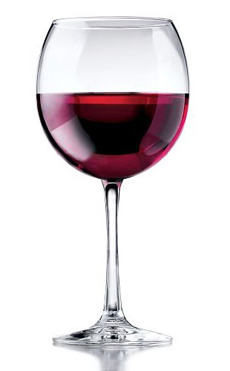 Make stemware shine with a distilled white vinegar bath. Photo courtesy Libbey.
July 2011
|
 |
Uses Of White Vinegar
Page 2: Cleaning The Kitchen With White Vinegar
This is Page 2 of a two-page article on the uses of vinegar. Here, an overview plus uses for white vinegar in cooking. Click on the black links below to visit other pages.
13 Uses For White Vinegar When Cleaning The Kitchen
Distilled white vinegar is a chemical-free cleaning agent, a natural alternative to harsh cleaners with added chemicals and abrasives.
- Surface Cleaner. Use vinegar to clean countertops, cutting boards and the microwave. The acetic acid acts as a disinfectant and an odor neutralizer. Recycle a spray bottle and fill with vinegar.
- Microwave. Remove food bits and odors by microwaving a bowl of vinegar and water; then use a towel or cloth to remove. Repeat as needed (if you do it weekly, it won’t build up). Burned popcorn odor requires multiple passes.
- Tea Kettle. Remove lime deposits by letting 1/2 cup distilled white vinegar sit overnight. If it doesn’t do the trick, boil vinegar in the kettle for 10 minutes; let cool and rinse.
- Coffee Maker. If you use your coffee maker daily, do this every three months to remove mineral deposits and enjoy better tasting coffee (and every six months if you don’t use it daily): Fill the water reservoir with one or more cups of white distilled vinegar (we use the whole 16-ounce bottle). Run the machine through a whole cycle. Run it twice more with plain water to rinse clean.
- Coffee Cups & Tea Cups. Remove stains by scrubbing with equal parts of salt and white distilled vinegar. Rinse clean.
- Food Storage Containers. To remove lingering odors, wipe containers with a cloth dampened with white distilled vinegar. For lunch boxes, soak a slice of bread in vinegar and leave it in the closed lunch box overnight.
- Stemware. Stemware can become cloudy from repeated dishwasher washings. To make them sparkle, wrap the glasses in paper towels soaked in vinegar. Let them sit for an hour or more; then rinse off the cloudy deposits.
- Refrigerator. Clean the shelves and walls of the fridge with a 50:50 solution of water and distilled white vinegar.
Clean the top of the fridge with a paper towel moistened with distilled white vinegar.
- Dishwasher. To remove soap build-up, pour a cup of white distilled vinegar inside an empty machine and run it through a whole cycle. Do it monthly.
- Garbage Disposal. It’s easy to clean and deodorize the garbage disposal. Mix equal parts vinegar and baking soda (it will fizz) and pour it into the drain. Let the mixture sit for a five minutes; then flush the drain with warm water.
- Sponges. Clean sponges and dish cloths with vinegar. Place them in a nonreactive bowl or pan with enough water to cover them. Then add 1/4 cup distilled white vinegar and let soak overnight. Rinse and you’re ready!
- Scouring Powder. Out of scouring powder? Make your own paste cleanser from 1/4 cup baking soda mixed with 1 tablespoon liquid detergent. Add just enough distilled white vinegar to create a thick, creamy texture.
- Floor Cleaner. In a spray bottle, 1/2 cup distilled white vinegar, 1/2 cup alcohol and 1/2 cup water. Add 6 drops of dishwashing liquid and shake to blend. Spray sparingly and mop up.
Go To Article Index Above
Lifestyle Direct, Inc. All rights reserved. Images are the copyright of their individual owners.

|